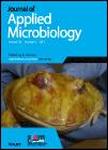版权所有:内蒙古大学图书馆 技术提供:维普资讯• 智图
内蒙古自治区呼和浩特市赛罕区大学西街235号 邮编: 010021

作者机构:Fluidion SAS R&D Div 231 Rue St Honore F-75001 Paris France Sorbonne Univ CNRS EPHE UMR Metis 7619 Paris France SIAAP Direct Innovat Environm Colombes France
出 版 物:《JOURNAL OF APPLIED MICROBIOLOGY》 (应用微生物学杂志)
年 卷 期:2019年第126卷第1期
页 面:332-343页
核心收录:
学科分类:0710[理学-生物学] 1007[医学-药学(可授医学、理学学位)] 100705[医学-微生物与生化药学] 07[理学] 0836[工学-生物工程] 071005[理学-微生物学] 10[医学]
基 金:'Prototypes Technologiques' programme of the Ile-de-France region Seine-Normandie Water Agency
主 题:Escherichia coli (all potentially pathogenic types) environmental/recreational water rapid quantification rapid test surface waters wastewater water quality
摘 要:Aims The purpose of this work is to present and evaluate the performance of a novel Automatic Lab-in-vial Escherichia coli Remote Tracking technology based on an automated real-time defined substrate approach, implemented in both portable and in situ instruments. Methods and Results We present the fresh water calibration procedure, and assess performance using side-by-side comparison with most probable number (MPN) approaches in terms of accuracy, reproducibility and capability to correctly generate early-warning alerts. Long-term data from an operational in situ deployment at a potential bathing site is presented as well. Conclusions Automatic Lab-in-vial Escherichia coli Remote Tracking technology is shown to be an accurate and rapid bacterial quantification technology, capable of autonomous in situ measurements with metrological capabilities comparable to those of an approved laboratory using MPN microplate techniques. Significance and Impact of the Study Rapid quantification of bacterial pollution is a requirement in water quality applications ranging from recreational water use, agriculture and aquaculture to drinking and wastewater treatment. The method and instruments presented in this work should enable fast and accurate bacterial concentration measurements to be performed in a portable or in situ manner, thus simplifying operational logistics, reducing time-to-result delays, and eliminating sample transportation constraints associated with traditional techniques.